2021 Land Rover Defender 90 First Drive: Practical Lust
Some cars encourage you to flirt with the ridiculous. On the one hand, you could argue I'm the perfect audience for the 2021 Land Rover Defender 90. My partner and I have two incomes but no kids, we live in the Midwest where snow is an annual occurrence, and heck I even have the British accent to go with this most British of automotive icons.
It's beguilingly easy, then, to go from lust to making some semblance of a justification.
Were I a traditionalist, meanwhile, I might make the argument that the two-door Land Rover is the true Defender. Four doors may be more practical, but spool back through to the SUV's origins and it's clear the original aesthetic was all about that truncated wheelbase and short, squared-off styling. Even the cool fabric roof of the early models has been carried forward to the 2021 Defender 90.
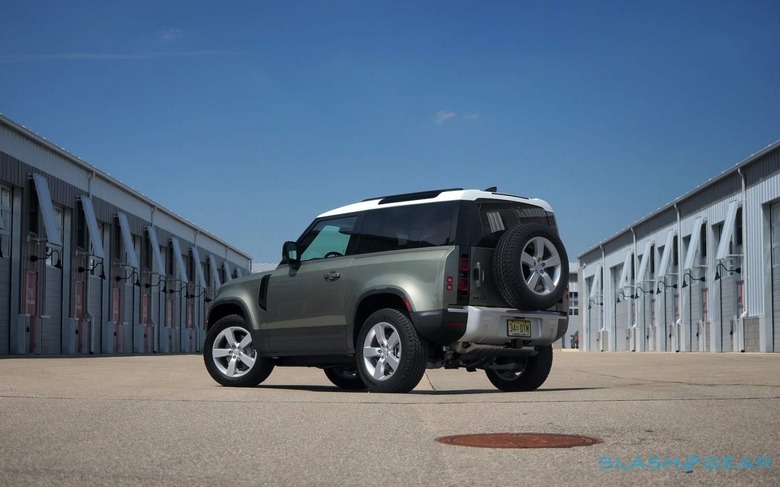
There are solid, practical reasons, if desire alone isn't quite swinging it for you. Trimming 17-inches from the wheelbase improves the breakover angle compared to the Defender 110, important if you're actually going to take the Land Rover to all the places the automaker built it to survive. It's actually cheaper to buy, too, starting at $46,100 (plus $1,350) for the Standard trim.
Of course, the reality is that though there's a second row of seats, getting into and out of them is a tricky thing. Partly that's down to having to clamber behind the flipped-forward front seats, as you'd expect – there are buttons to power them forward too, but it's slow-going – and then there's also the ride height of the Defender 90 to consider. My first attempt at an exit was not a graceful thing to observe, as my toes tried to find a side-step that wasn't actually there.
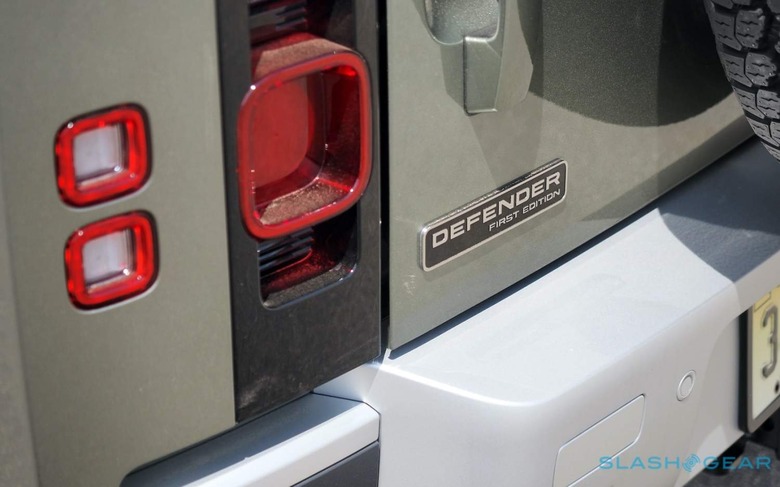
I'd not, then, like to consider loading and unloading kids back there on a regular basis. Maybe, if you have just the one, you could check off the jump seat option, which replaces the front center console with a fold-down mini-chair. There's still a three-point belt, along with USB and power ports for the rear and a couple of molded cup-holders for when it's folded flat, but the dimensions are definitely tight. If you don't have the hips of a six-year-old you probably don't want to be sitting there, and I'm not surprised that Land Rover expects a sub-10-percent take-rate on the $900 option.
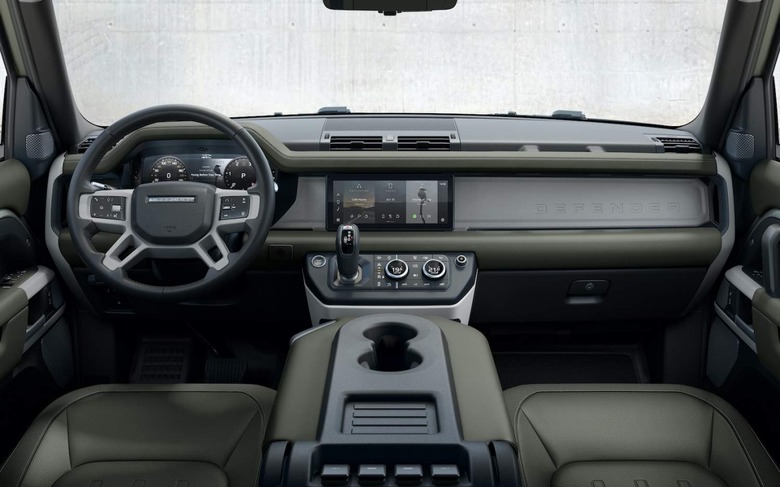
Generally, though, I'm a fan of the Defender's cabin. Both the 90 and the 110 are basically the same inside, a well-designed blend of rugged materials like rubber and optional steel-cut Kvadrat technical fabric with sturdy metal and plastic. It feels tough and durable without straying into pastiche territory.
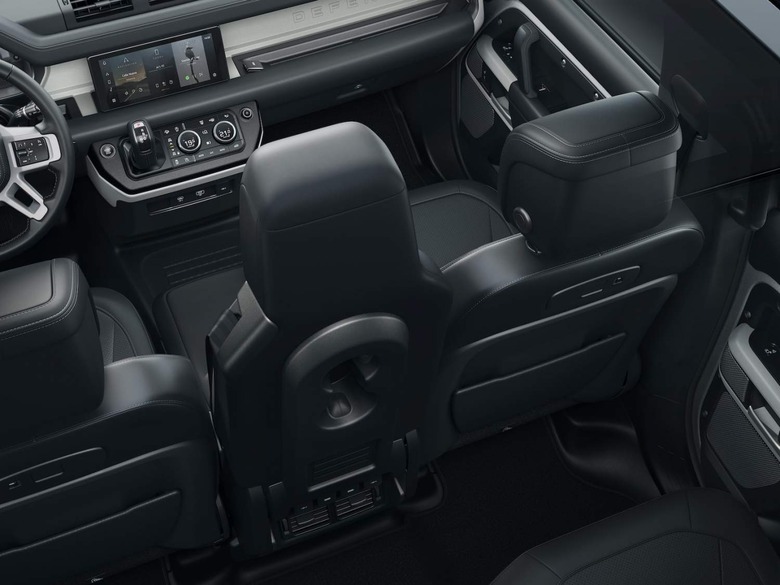
Everything is laid out comprehensively, and there are plenty of physical buttons and knobs scaled for gloved-hands to deal with. There's wireless phone charging and dual-zone climate control, plus a fully-digital driver display and a 10-inch touchscreen for the Pivi Pro infotainment system. Right now that supports wired Apple CarPlay and Android Auto, but Land Rover says wireless versions are coming (and, in theory at least, should be able to upgrade existing cars with software updates). That's also where you see all the Terrain Response program options and settings, if you dare switch the Defender 90 out of Auto mode.
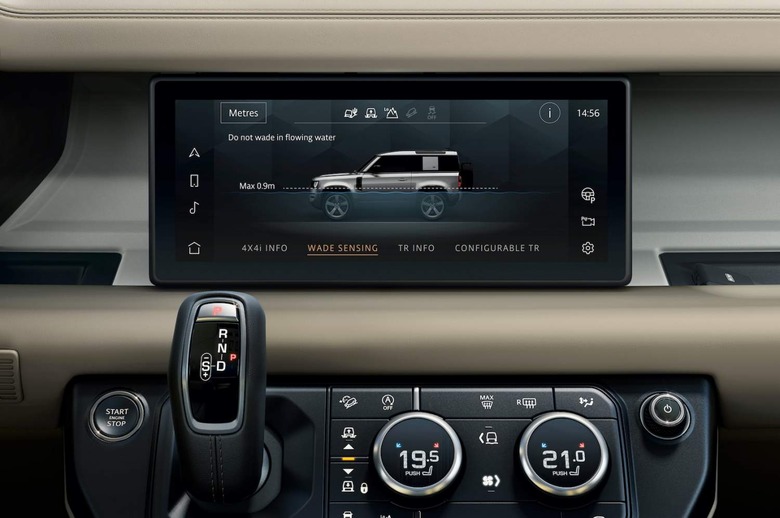
As you'd expect there are the same modes for sand, rock crawl, and other arduous conditions, along with a new Wade Program which automatically raises the SUV and closes the HVAC intakes for you to cruise through deeper water of up to 35.4-inches, and then uses the brakes at the end to dry off the wheels. Terrain Response is now configurable, too, allowing you to tweak the settings for everything from ride height to engine responsiveness.
My road drive ignored all that completely, with the occasional puddle the most arduous water hazard the Defender 90 faced. I suspect most owners will do the same: Land Rover takes pride in the fact that it builds go-anywhere SUVs, and of those the Defender is the burliest, most capable of them all, but I'd hazard a guess that the majority play Urban Warrior far more than truly rampaging through the wilderness.
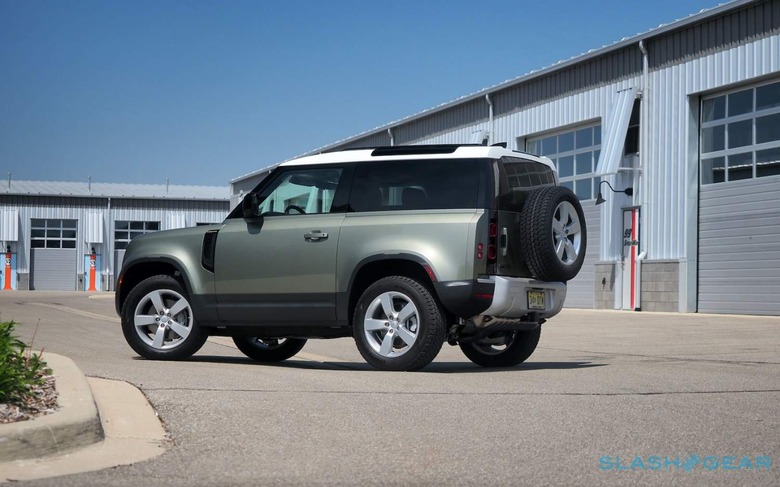
Happily, then, the Defender 90 copes with civilization just swell. It feels more spritely than its four-door sibling, with the air suspension on my $64,100 First Edition tester smoothing out some of the inevitable rocking and bobbing that comes when you combine mediocre roads with a shorter wheelbase. I'll have to try the standard, coil-spring version to see how that fares, and whether the $1,600 Land Rover asks for an air cushion upgrade on the lower trims is the must-have I fear it to be.
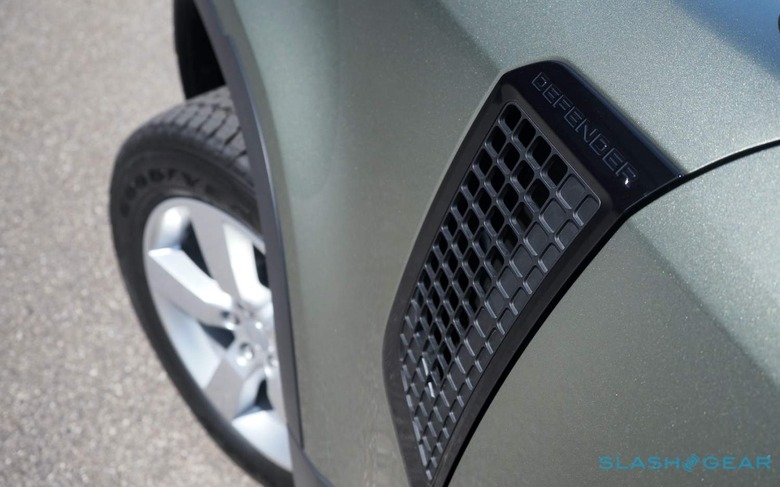
This isn't a sports car, but it definitely errs on the nimble, more playful side. The P400 mild-hybrid engine helps, a turbo 3.0-liter straight-six with 395 horsepower and 406 lb-ft of torque. They're good numbers, though the eight-speed automatic transmission can leave things feeling a tad more leisurely from a standing start than you'd expect. Notch the shifter over to Sport mode, though, and things get much more urgent as you leap away from the lights. Either way, once you're moving there's plenty of torque for passing and acceleration feels brisk.
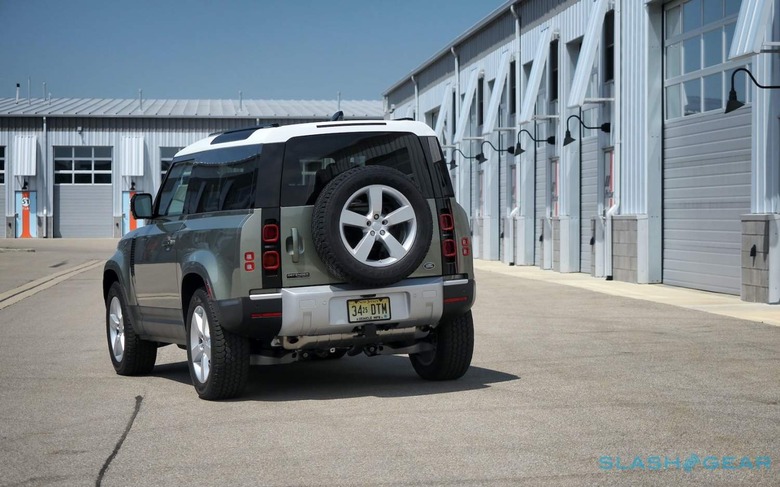
The P300 engine, meanwhile, is a turbo 2.0-liter four-cylinder with 296 hp and 295 lb-ft of torque; as with the steel suspension, I'll have to wait to pass judgment on that. Frankly I'm more intrigued by the upcoming 5.0 V8 Defender 90, which arrives later this year and promises the same sort of off-road talent with more aggression on-road. It'll probably make the P400's 17 mpg city / 22 mpg highway / 19 mpg economy numbers look healthy, too.
Further down the line, Jaguar Land Rover is all-in on electrification. The first all-electric Land Rover will arrive in 2024, with six pure EVs on the roadmap by 2030. I'll admit, I'd love a Defender EV, though I'd settle for a plug-in hybrid version while I waited.
2021 Land Rover Defender 90 Verdict
Rationality would tell you to buy the four-door Defender. That gets you more practicality, more trunk space – the 90's 15.6 cu-ft is less than half what a five-seater 110 offers, though it does at least expand to over 58 cu-ft with the second row folded – and more mature on-road manners.
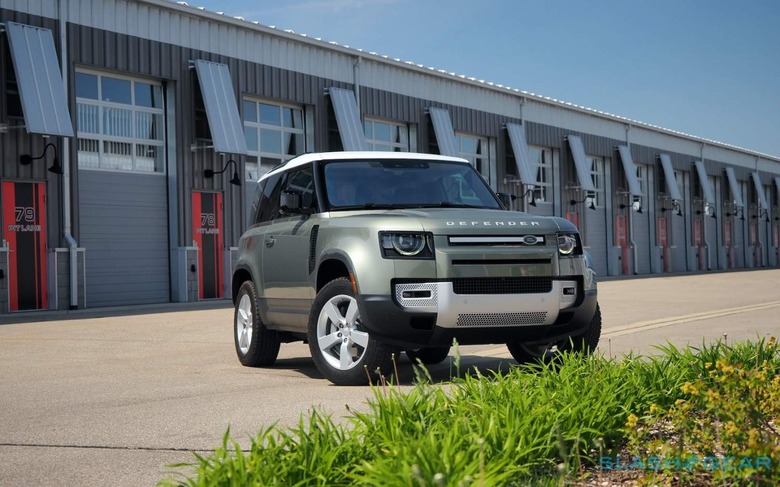
Then again, if everyone made rational choices we'd probably all be driving minivans and hatchbacks, and while I'm a fan of both I'm also readily swayed by the impractical and the exotic. There is a feel to the 2021 Defender 90 which cannot be denied: a chirpy, chunky, "toy for grown-ups" allure that most rival SUVs lack. Just as we don't condemn a Chiron for having mediocre luggage space, or question the gas profligacy of a Flying Spur, maybe there is just as much a place for a truck that is equally parts emotional decision as a realistic one.
For most people the four-door Defender 110 is the wisest choice, with that I won't argue. If you're among that small, lucky cohort of people whose lifestyle suits the two-door style, however, the Defender 90 is playfully indulgent in addition to being just plain capable.
